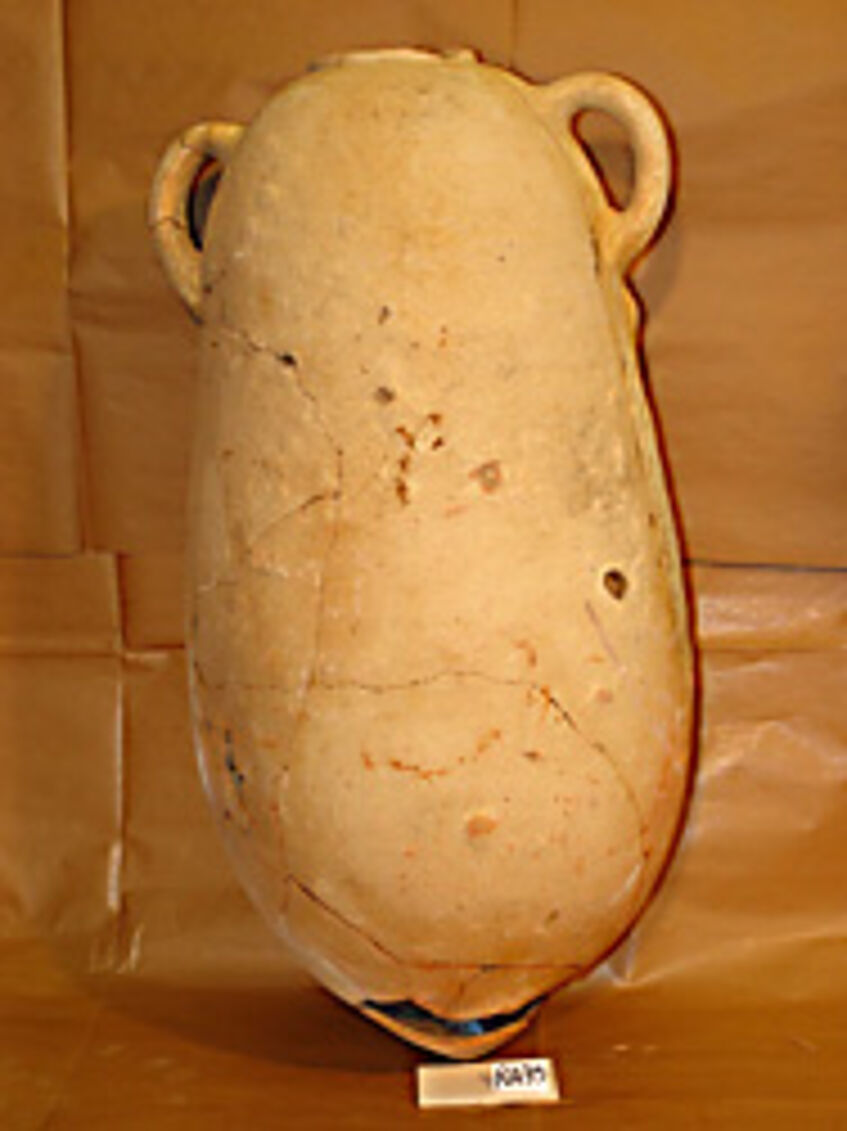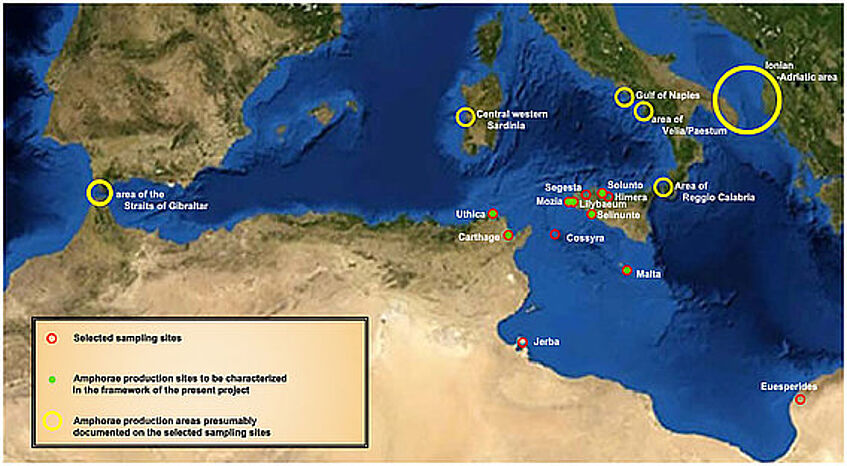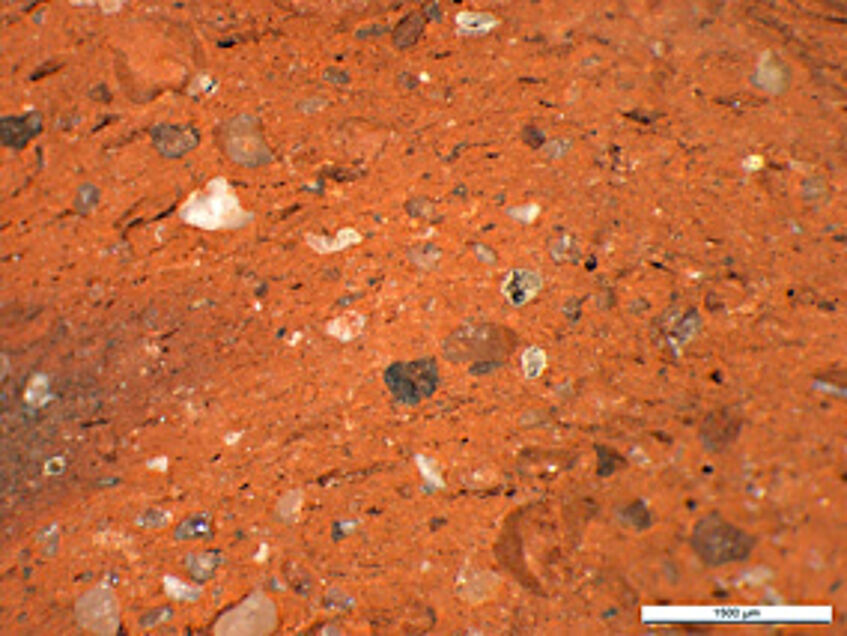Economic interactions between Punic and Greek settlements in the southern Central Mediterranean (late 7th-4th BCE): the evidence of the transport amphorae
Project affiliation: Institut für Klassische Archäologie
Project leader: Dr. Babette Bechtold
Cooperation: Prof. Giuseppe Montana, Associated professor at the Dipartimento di Scienze della Terra e del Mare – DiSTeM, Università di Palermo
Supporting scientific structures: Dr. M. Famà (director of the Parco archeologico ed ambientale presso le isole dello Stagnone e delle aree archeologiche di Marsala e dei Comuni limitrofi), Dr. C. Greco (director of the Parco archeologico di Selinunte e Cave di Cusa “Vincenzo Tusa” e delle aree archeologiche di Castelvetrano, Campobello e dei Comuni limitrofi), Dr. S. Vassallo (scientific director of the Soprintendenza BB.CC.AA. di Palermo), Dr. F. Spatafora (director of the Parco archeologico di Himera e delle aree archeologiche di Termini Imerese e e dei Comuni limitrofi), Dr. N. Vella (University of Malta), Prof. B. Maraoui Temini (Université de Tunis), Dr. S. Ben Tahar (Institut National du Patrimoine de Jerba), Dr. K. Göransson (Research and Development Curator, Medelhavsmuseet, Stockholm), Dr. J. Ramón Torres (University of Barcelona), Prof. C. Marconi (New York University, IFA), Prof. Th. Schäfer (University of Tübingen), Dr. R. Giglio (scientific director of the Soprintendenza BB.CC.AA. di Trapani), Prof. R.F. Docter (Gent University).
Financial support: Austrian Science Fund FWF: P 25046-G19.
Team: Mag. Karin Schmidt (University of Vienna), Prof. Giuseppe Montana, Dr. A.M. Polito (both University of Palermo), Mag. Maxine Anastasi (Oxford University), Cultural Heritage Computing (CHC, University of Salzburg), Dr. J. Bejaoui, H. Abdelwahed (both Centre National des Sciences et Technologies Nucléaires de Tunisie).
Abstract of the project
Armed conflicts shaped substantially the Phoenician-Punic - Greek relations in the southern Central Mediterranean and especially in Sicily. On the other hand, archaeological evidence for active commercial trade and complex economic interactions between the mighty, independent cities of this area increases steadily. Recent research conducted in the main Phoenician-Punic settlements located in this region, e.g Carthage, the Maltese archipelago, Motya, Palermo and Solunto, but also on minor sites as Cossyra, has underlined the intense involvement of the whole area in the international maritime trade from the late 8th-7th cent. BCE onwards.
Transport amphorae are considered to represent one of the most reliable markers for economic exchange. For this reason their correct provenance identification is extremely helpful for the reconstruction of ancient trade routes. In this light it is highly emblematic that from the 7th cent. BCE onwards Phoenician-Punic amphorae appear to be attested in West Greek colonies, while contemporaneously foodstuffs produced by different Greek cities reach regularly Phoenician-Punic cities located in the southern Central Mediterranean area.
The present project focuses on the provenance identification of Phoenician-Punic and West Greek amphorae yielded by excavations on sites located in North Africa, on Malta and in western Sicily (fig. 3) by the means of both, fabric studies of c. 830 samples and archaeometric analysis.
The three main points of research focus on:
1. the fabric characterization and the archaeometric analysis of the local fabrics of crucial Phoenician-Punic production centers with special regard to western Sicily (Motya, Solunto, Lilybaeum, Selinunte) and Carthage, but also North Africa (Utica), Malta and Ibiza,
2. the analysis of the chrono-typological evolution especially of the series of Carthage, Motya and Palermo/Solunto by the study of 240 mostly entirely preserved vessels found in the Greek cemeteries of Himera,
3. the increase of the distribution range of already identified West Greek and Punic amphorae fabrics documented on selected Phoenician-Punic consumption sites (Ghizène/Jerba, Carthage, Cossyra, Selinunte, Segesta, Tas-Silg, Zejtun/Malta, Euesperides).

Fig. 1. Amphora of Carthaginian fabric, type Karthago 1A2/3, from enchytrismos grave RA.DE.O 39 from the necropolis of Pestavecchia, Himera (published in Vassallo 1999, 366-367, fig. 17,61).

Fig. 2. Amphora of Motyian fabric, type Ramón T-2.1.1.2, from enchytrismos grave RA.DE.O 131 from the necropolis of Pestavecchia, Himera (published in Vassallo 1999, 364-365, fig. 16,60).

Fig. 3. The geographical area relevant to the present project.
As a rule, the standardized documentation of the samples refined for Facem (see www.facem.at) will be applied to the hole assemblage. This procedure will allow the characterization and definition of several production centres by fabrics, to be attributed mainly to Phoenician-Punic Sicily, but also to norther Tunisia, Malta, the area of the Straits of Gibraltar, Ibiza, western Sardinia, Calabria, Lucania and the Ionian-Adriatic area.
Archaeometric analysis undertaken by the équipe of G. Montana will help to determinate the local fabrics of the Punic production sites of Lilybaeum and Selinunte, but also of Carthage. It will consist in thin-section petrography by polarizing microscope and chemical analysis by X-ray fluorescence spectrometry (XRF).
CHC will create a software module for the FACEM database, specially designed for archaeometric research which will also integrate the already available archeological data. This procedure will allow to extend the powerful open access system to all involved disciplines.
The systematical, open access publication of the most relevant southern Central Mediterranean Phoenician-Punic fabrics on FACEM will represent an innovative way to communicate results and will allow a large scientific community to identify these productions on consumption sites located in North Africa, Punic Sardinia, Southern Italy and especially in Sicily.
Secondly, the results of the research aim to approach some working hypothesis related to economic interactions between Phoenician-Punic and West Greek colonies from the late 7th-late 4th cent. BCE. This time range corresponds to the historical period characterized by complex relationships between the autonomous West Greek and Phoenician-Punic emporia, preceding the moment, towards the beginning of the 3rd cent. BCE, when Rome and the Campanian allied appeared on the internal commercial scene. Special attention will be payed to the interpretation of the distribution patterns of the identified amphorae productions. Therefore, the present research will contribute to the understanding of the diachronic, regional and extra-regional distribution range of the locally produced foodstuffs of the important Phoenician-Punic Sicilian emporia of Motya, Solunto and Palermo and of Carthage.
Thirdly, the present project will characterize the extra-regional distribution of the amphorae fabricated in the wine-producing sites/areas of the Ionian-Adriatic and Calabrian region and of Lucania, best attested on several Punic consumption places, in order to underline the strong impact of theses Greek wines on the local communities which seems still to be underestimated.

Fig. 4. Macroscopic photo of Carthaginian amphora, type Karthago 1 A2/3, from the Cossyra survey (published in Bechtold forthcoming, cat. 5).

Fig. 5. Macroscopic photo of amphora from Velia, close to Gassner 'Rand 7', from the Cossyra survey (published in Bechtold forthcoming, cat. 120).
Essential References
- Barone et al. 2002, Barone G. - Ioppolo S. - Majolino D. - Migliardo P., Sannino S. - Spagnolo G. - Tigano G., Contributo delle analisi archeometriche allo studio delle ceramiche provenienti dagli scavi di Messina. Risultati preliminari, in: Bacci G. M. – Tigano G. (eds.), Da Zancle a Messina. Un percorso archeologico attraverso gli scavi II**, Messina, 2002, 87-142.
- Bechtold B. 2008, Observations on the Amphorae Repertoire of Middle Punic Carthage, Carthage Studies 2, Gent.
- Bechtold B. 2011a, Amphorae Production in Punic Sicily (7th-3rd/2nd Centuries BCE): an Overview, in: FACEM (version 06/06/2011) (http://www.facem.at/project-papers.php)
- Bechtold B. 2011b, The Pottery Production of Punic Carthage, in FACEM (version 06/06/2011)(http://www.facem.at/project-papers.php).
- Bechtold B. forthcoming, Le anfore da trasporto di Cossyra: un'analisi diacronica (VIII sec. a.C. - VI sec. d.C.) attraverso lo studio del materiale dalla ricognizione, in: Almonte M. (ed.), Cossyra. Ricognizione topografica. Storia di un paesaggio mediterraneo. Cossyra 2. Tübinger Forschungen zur Archäologie.
- Bechtold B. – Docter R.F. 2010, Transport Amphorae from Carthage: An Overview, in: L. Nigro (ed.), The Phoenician Ceramic Repertoire between the Levant and the West – 9th to 6th century B.C. VIII Giornata di Studi Moziesi "Antonia Ciasca". Quaderni di Studi Fenici e Punici, Roma, 85-116.
- Bechtold B. - Gassner V. - Trapichler M. 2011, Fabrics of the area of Carthage, in: FACEM (version 06/06/2011, http://www.facem.at/img/pdf/Fabrics_of_the_Area_of_Carthage_06_06_2011.pdf
- Ben Tahar S. 2009, L'occupation du sol à Rhizène à l'époque antique: les données de la prospection, Reppal 14, 63-80.
- Castiglione M. - Oggiano I., Anfore fenicie e puniche in Calabria e Lucania: I dati e I problemi, RStFen XXXVI, 1-2, 2008, 205-231.
- Docter R.F. 1997, Archaische Amphoren aus Karthago. Fundspektrum und Formenentwicklung. Ein Beitrag zur phönizischen Wirtschaftsgeschichte. Dissertation Universität Amsterdam.
- FACEM, Gassner V. - Trapichler M. - Bechtold B. (eds.), Provenance Studies on Pottery in the Southern Central Mediterranean from the 6th to the 2nd c. B.C., version 1 of 6.6.2011, http://www.facem.at/
- Famà M.L. (ed.) 2002, Mozia. Gli scavi nella “Zona A” dell’abitato.
- Finocchi S. 2009, Le anfore fenicie e puniche, in: Bonetto J. - Ghiotto A.R. - Novello M. (eds.), Nora. Il foro romano. Storia di un'area urbana dall'età fenicia alla tarda antichità. 1997-2006, II.1, Padova, 373-467.
- Fourmont M. H. 1994, Les ateliers de Sélinonte (Sicile), BCH Suppl. XXIII, 57-68.
- Gassner V. 2003, Materielle Kultur und kulturelle Identität Eleas in spätarchaisch-frühklassischer Zeit. Untersuchungen zur Gefäss- und Baukeramik aus der Unterstadt (Grabungen 1987-1993). Velia-Studien 2, Wien.
- Maraoui Telmini B. - Bouhlel S. 2011, Petrographic and mineralogy characterization of local Punic plain wares from Carthage and Utica, in: Sagona C. (ed.), Ceramics of the Phoenician-Punic world: collected essays. Ancient Nera Eastern Studies Suppl. 36, Leuven, 327-348.
- Maraoui Telmini et al. 2011, Maraoui Telmini B. - Bejaoui J. - Abdelouahed H. - Bouhlel S., Contribution à la caractérisation minéralogique, pétrographique et chimique de la céramique punique commune de Carthage et des argiles de la région, in: La Carthage punique: diffusion et permanence de sa culture en Afrique antique (Tunis 2008), Tunis, 15-41.
- Montana et al. 2010, Montana G. - Cau Ontiveros M.A. - Polito A.M. - Azzaro E., Characterization of clayey raw materials for ceramic manufacture in ancient Sicily, Applied Clay Sciences XXX.
- Orton C – Tyers P. - Vince A. 1983, Pottery in Archaeology, Cambridge – New York.
- Peacock D.P.S. 1977, Ceramics in Roman and Medieval Archaeology, in: Peacock D.P.S. (ed.), Pottery in Early Commerce, London, 21-34.
- Ramón Torres J. 1995, Las ánforas fenicio-púnicas del Mediterráneo central y occidental, Barcelona..
- Sagona C. forthcoming, The pottery, in: Bonanno A., Vella N.C. (eds.), The University of Malta Excavations at Tas-Silg, Malta, 1996-2005, Leuven.
- Sourisseau J.-Ch. 2011, La diffusion des vins grecs d'Occident du VIIIe au IVe s. av. J.-C., sources écrites et documents archéologiques, in: La vigna di Dioniso. Vite, vino e culti in Magna Grecia (Atti del 49e Convegno di Studi sulla Magna Grecia, Taranto 2009), Taranto, 145-252
- Sourisseau J.-Ch. forthcoming, Les amphores phénico-puniques de la nécropole de Refriscolaro à Camarine (fouilles P. Pelagatti, 1969-1979, tombes 1-1800). Caractérisation et aspects de la circulation des produits puniques en Sicile orientale au VIe av. J.-C., in: Giudice G. (ed.), Veder greco a Camarina dal principe di Biscari al nostri giorni, Catania.
- Spagnolo G. 2002, Anfore da trasporto arcaiche e classiche nell'Occidente greco: nuove acquisizioni da recenti rinvenimenti a Messina, in: Bacci G. M. – Tigano G. (eds.), Da Zancle a Messina. Un percorso archeologico attraverso gli scavi II**, Messina, 31-46.
- Vassallo S. 1999, Himera, necropoli di Pestavecchia. Un primo bilancio sulle anfore da trasporto, Kokalos 45, 329-379.
